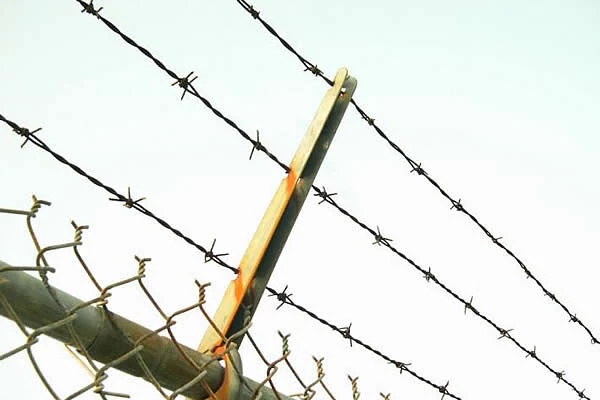When considering the installation of a chain link fence topped with barbed wire, understanding the costs involved is crucial for effective budgeting. This fencing solution combines functionality with security, making it a popular choice for both residential and commercial properties. Let's delve into the nuances of pricing and key factors influencing the cost to offer a comprehensive guide to prospective fence installers.

Chain link fences are recognized for their durability and adaptability, providing a balance of visibility and protection. The added layer of barbed wire enhances security, making it harder for intruders to breach the perimeter. While chain link fences are typically more affordable than other fencing options, the added complexity of barbed wire requires detailed cost considerations.
One of the primary factors affecting cost is the material quality. Standard chain link fences are often made from galvanized steel, which offers rust resistance and longevity. Upgrading to vinyl-coated or stainless steel can increase costs but enhances durability and aesthetic appeal. Home and business owners should weigh these options based on the intended use and environmental exposure.

The height and length of the fence significantly impact the overall expense. Standard residential fences range from 4 to 6 feet in height, whereas increased security needs might necessitate fences as tall as 8 feet. Each additional foot adds to both material and labor costs. Moreover, the perimeter to be enclosed directly influences the volume of material required, thus impacting the total expenditure.
Installation labor forms a substantial part of the cost calculus. Engaging professional installers, while more expensive than DIY methods, ensures precision, safety, and adherence to local regulations. Labor costs can vary based on geographical location, complexity of the terrain, and the intricacies involved in integrating barbed wire. For those considering a DIY approach, purchasing or renting the necessary tools will account for additional expenses.
Geographical factors also play a pivotal role in pricing. Urban areas might witness elevated labor charges compared to rural regions due to the higher standard of living and operational costs. Additionally, local weather conditions influence material choice; regions prone to severe weather might necessitate specialized materials to withstand wind and corrosion, consequently driving up costs.
chain link fence with barbed wire cost
Regulatory compliance is another essential consideration. Zoning laws and local ordinances may dictate specific fence heights, materials, or barbed wire usage; failure to comply can result in fines or mandatory adjustments. It’s advisable to consult local authorities or a land use attorney to ensure the proposed fence aligns with legal stipulations, potentially mitigating unforeseen expenses.
Another critical aspect is maintenance costs. While chain link fences are generally low-maintenance, routine inspections for rust or damage are advisable. Galvanized fences require minimal upkeep, while vinyl coatings might necessitate occasional cleaning to maintain appearance. Proactively maintaining barbed wire stretches can prevent sagging or detachment, ensuring the fence remains an effective deterrent.
Advancements in installation technology and enhanced materials have begun to influence costs positively, often outweighing the initial investment with longevity and reduced maintenance frequencies. Modern chain link designs and accessories such as privacy slats or security systems can further augment the fence's utility and aesthetic, though they can also raise initial costs.
To encapsulate,
the cost for constructing a chain link fence with barbed wire is multifaceted. Quality materials, fence dimensions, labor, geographical considerations, regulatory factors, and long-term maintenance all contribute to the financial outlay. Homeowners and business decision-makers should strive to strike a balance between cost-effectiveness and security, potentially consulting with fencing experts to obtain specific quotes and tailored advice.
By comprehending these core components, one can make an informed decision that ensures optimal security without straining the budget, leveraging the expertise of industry professionals to guide through the nuances of fencing investments.
 TEL:
+86-13102802206
TEL:
+86-13102802206
 Email:
fencenetting@china.com
Email:
fencenetting@china.com
 Language
Language
 TEL:
+86-13102802206
TEL:
+86-13102802206
 Email:
fencenetting@china.com
Email:
fencenetting@china.com
 Language
Language



